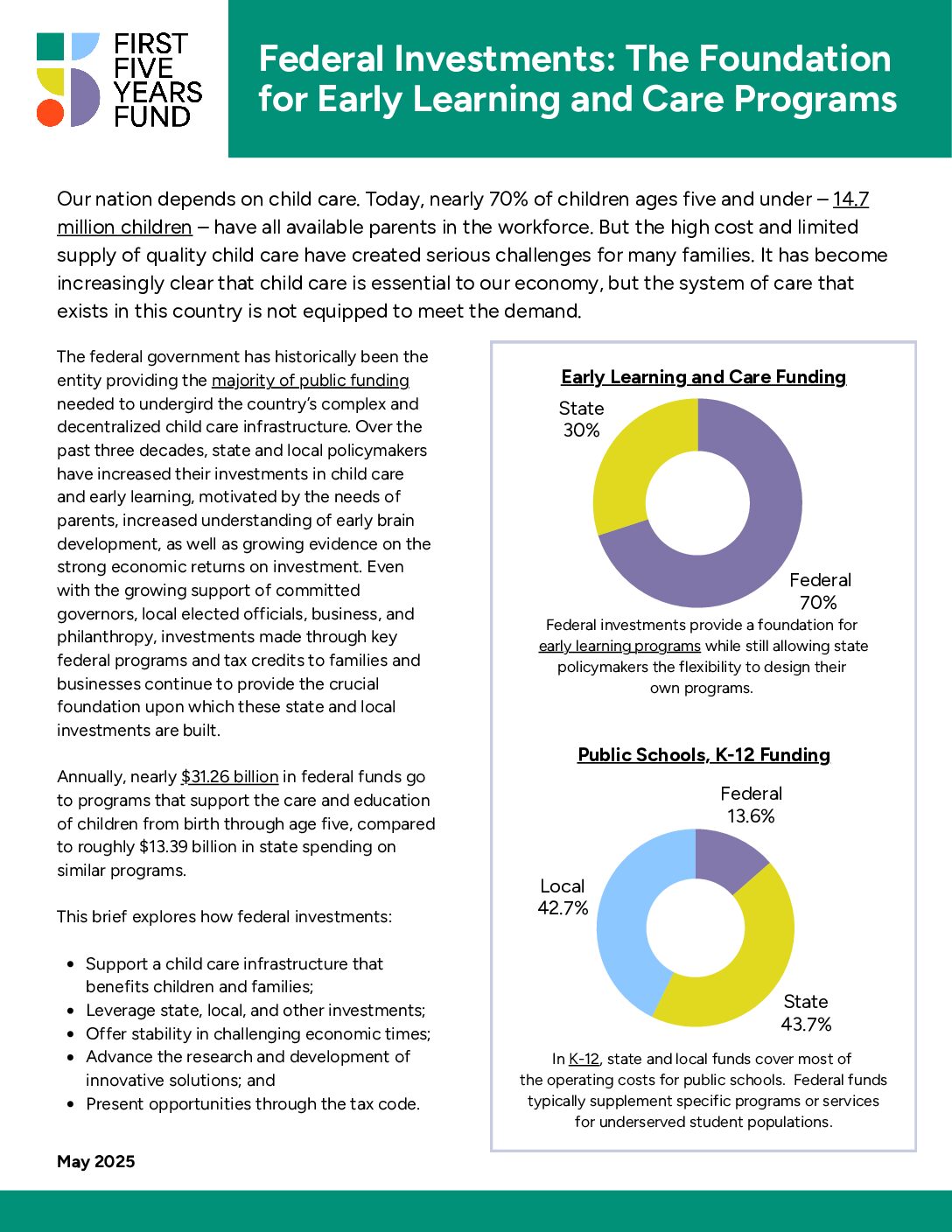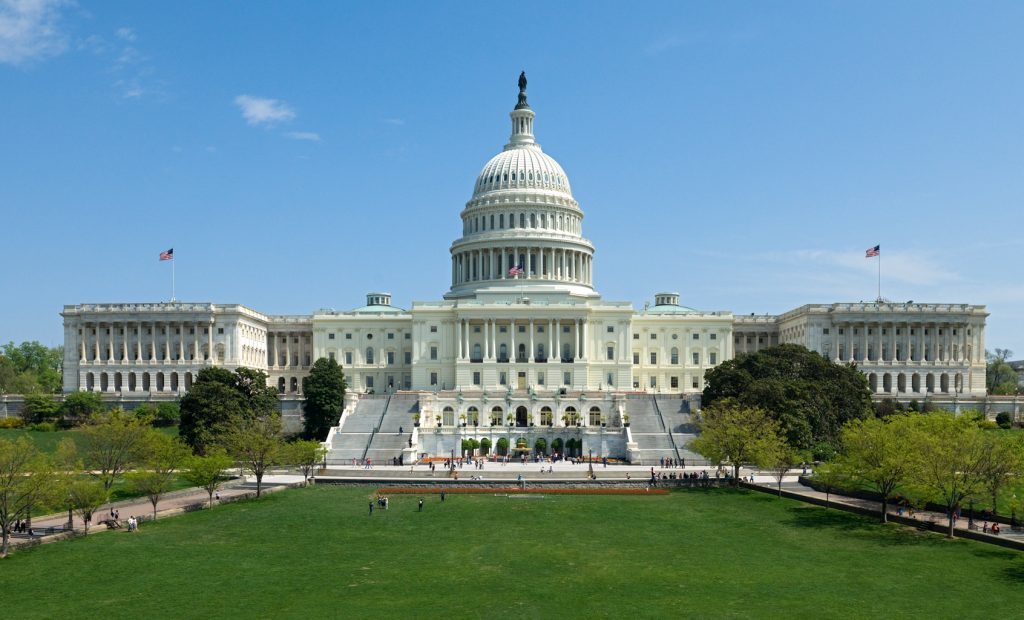Federal Investments are the Foundation for State and Local Early Care and Education Programs
Our nation depends on child care. Today, nearly 70% of children ages five and under – 14.7 million children – have all available parents in the workforce. But the high cost and limited supply of quality child care have created serious challenges for many families. It has become increasingly clear that child care is essential to our economy, but the system of care that exists in this country is not equipped to meet the demand.
The federal government has historically been the entity providing the majority of public funding needed to undergird the country’s complex and decentralized child care infrastructure. Over the past three decades, state and local policymakers have increased their investments in child care and early learning, motivated by the needs of parents, increased understanding of early brain development, as well as growing evidence on the strong economic returns on investment. Even with the growing support of committed governors, local elected officials, business, and philanthropy, investments made through key federal programs and tax credits to families and businesses continue to provide the crucial foundation upon which these state and local investments are built.
Annually, nearly $31.26 billion in federal funds go to programs that support the care and education of children from birth through age five, compared to roughly $13.39 billion in state spending on similar programs.
This brief explores how federal investments:
- Support a child care infrastructure that benefits children and families;
- Leverage state, local, and other investments;
- Offer stability in challenging economic times;
- Advance the research and development of innovative solutions; and
- Present opportunities through the tax code.
Subscribe to FFYF First Look
Every morning, FFYF reports on the latest child care & early learning news from across the country. Subscribe and take 5 minutes to know what's happening in early childhood education.




